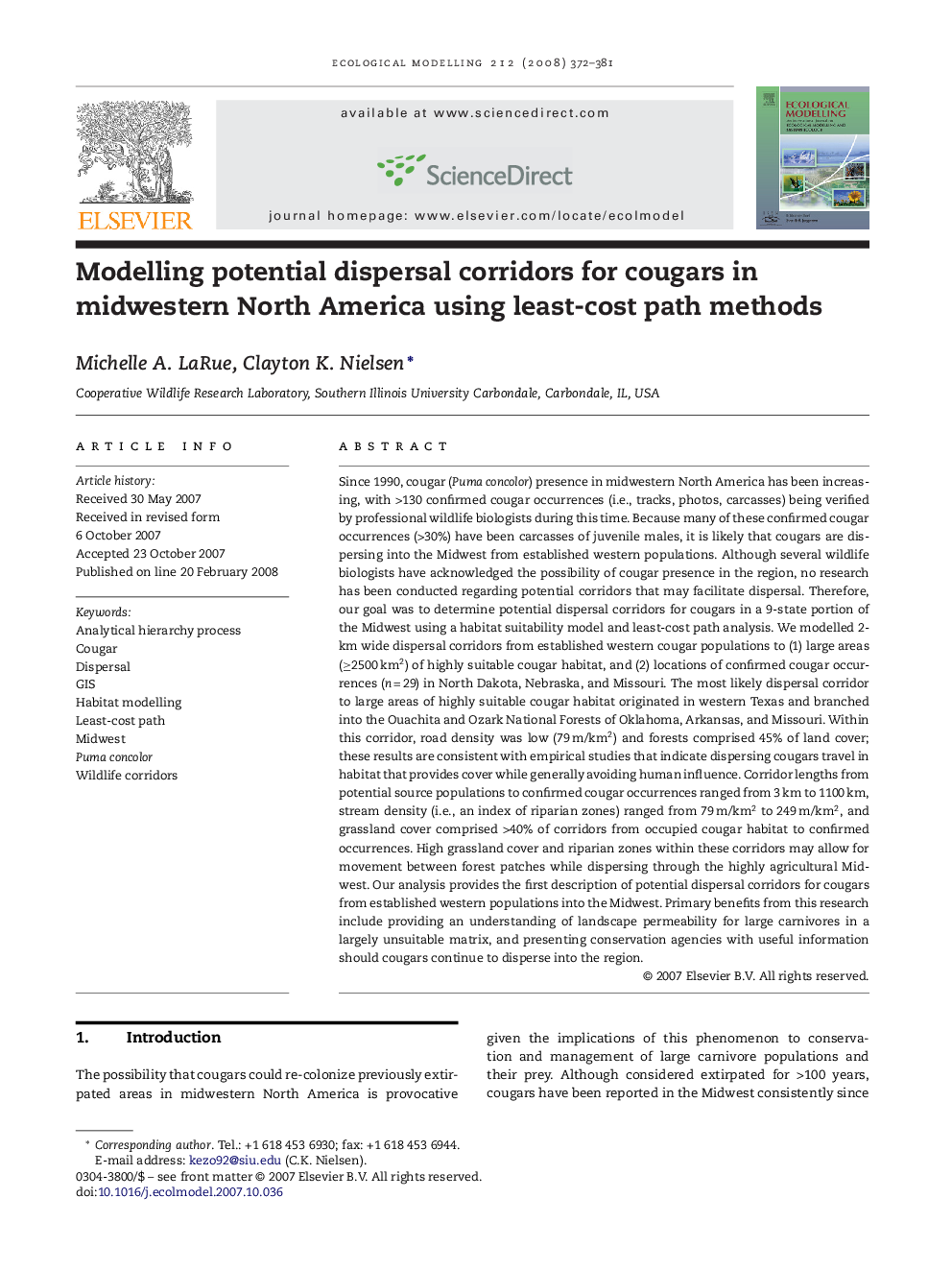| کد مقاله | کد نشریه | سال انتشار | مقاله انگلیسی | نسخه تمام متن |
|---|---|---|---|---|
| 4378316 | 1617535 | 2008 | 10 صفحه PDF | دانلود رایگان |

Since 1990, cougar (Puma concolor) presence in midwestern North America has been increasing, with >130 confirmed cougar occurrences (i.e., tracks, photos, carcasses) being verified by professional wildlife biologists during this time. Because many of these confirmed cougar occurrences (>30%) have been carcasses of juvenile males, it is likely that cougars are dispersing into the Midwest from established western populations. Although several wildlife biologists have acknowledged the possibility of cougar presence in the region, no research has been conducted regarding potential corridors that may facilitate dispersal. Therefore, our goal was to determine potential dispersal corridors for cougars in a 9-state portion of the Midwest using a habitat suitability model and least-cost path analysis. We modelled 2-km wide dispersal corridors from established western cougar populations to (1) large areas (≥2500 km2) of highly suitable cougar habitat, and (2) locations of confirmed cougar occurrences (n = 29) in North Dakota, Nebraska, and Missouri. The most likely dispersal corridor to large areas of highly suitable cougar habitat originated in western Texas and branched into the Ouachita and Ozark National Forests of Oklahoma, Arkansas, and Missouri. Within this corridor, road density was low (79 m/km2) and forests comprised 45% of land cover; these results are consistent with empirical studies that indicate dispersing cougars travel in habitat that provides cover while generally avoiding human influence. Corridor lengths from potential source populations to confirmed cougar occurrences ranged from 3 km to 1100 km, stream density (i.e., an index of riparian zones) ranged from 79 m/km2 to 249 m/km2, and grassland cover comprised >40% of corridors from occupied cougar habitat to confirmed occurrences. High grassland cover and riparian zones within these corridors may allow for movement between forest patches while dispersing through the highly agricultural Midwest. Our analysis provides the first description of potential dispersal corridors for cougars from established western populations into the Midwest. Primary benefits from this research include providing an understanding of landscape permeability for large carnivores in a largely unsuitable matrix, and presenting conservation agencies with useful information should cougars continue to disperse into the region.
Journal: Ecological Modelling - Volume 212, Issues 3–4, 10 April 2008, Pages 372–381